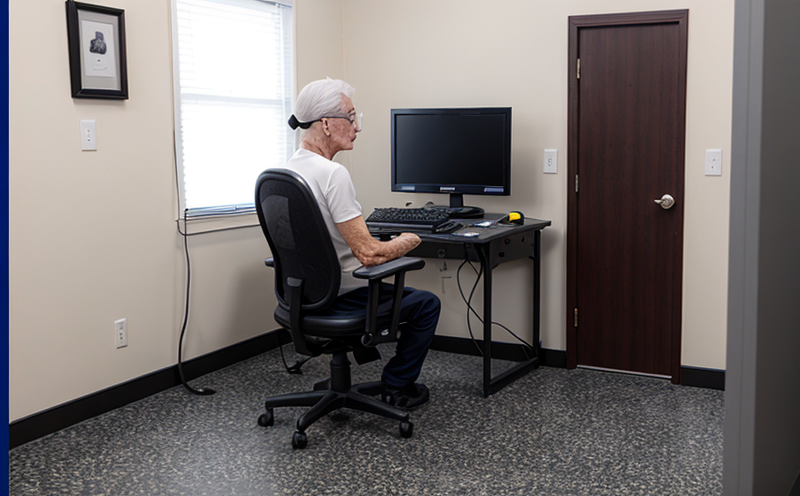AATCC 150 Dimensional stability of garments after home laundering
The AATCC 150 test method is designed to evaluate the dimensional stability of textile products, specifically focusing on how well a garment retains its original shape and size following multiple cycles of home laundering. This service is essential for ensuring that textiles maintain their fit, appearance, and functionality over time, which is critical in sectors such as apparel manufacturing, retail, and consumer goods.
Dimensional stability is influenced by various factors including the composition of the fabric, yarn construction, finish applied during production, and the type and frequency of washing. Testing this aspect helps manufacturers identify potential quality issues early on, ensuring that products meet customer expectations and regulatory standards. Compliance with AATCC 150 not only enhances brand reputation but also protects consumers from purchasing garments that may shrink or stretch excessively.
This test is particularly important for weaved fabrics where slight changes in dimensions can significantly impact the fit of a garment. By simulating real-world conditions, this method provides valuable insights into how products will perform under typical consumer use scenarios. The results are used to guide design and manufacturing processes, helping companies develop more durable and customer-friendly products.
The AATCC 150 procedure involves subjecting samples to multiple cycles of washing according to specified temperature, detergent type, and agitation level. After the wash cycles, the dimensions of each sample are measured and compared against the original measurements taken before testing began. Acceptance criteria vary depending on the specific fabric type; however, generally, a deviation greater than 2% in length or width is considered unacceptable.
Understanding the importance of dimensional stability extends beyond mere aesthetics—it plays a crucial role in maintaining comfort levels for end users. Garments that do not maintain their intended fit can lead to discomfort and dissatisfaction among consumers. Therefore, rigorous testing like AATCC 150 ensures consistent quality across all production batches, contributing to satisfied customers and loyal brand advocates.
Compliance with international standards such as ISO 20343 also supports broader market acceptance by aligning with global best practices in textile manufacturing. For companies operating internationally or targeting export markets, adherence to these guidelines can facilitate easier entry into new regions without compromising on quality.
Why It Matters
The significance of AATCC 150 lies in its ability to predict how garments will behave over extended periods under typical consumer conditions. This foresight allows manufacturers to make informed decisions about material selection, finishing treatments, and processing techniques that enhance dimensional stability.
- Enhanced customer satisfaction through consistent product performance
- Avoidance of warranty claims due to fabric shrinkage or stretching issues
- Promotion of brand loyalty by delivering high-quality products consistently
- Facilitation of regulatory compliance across different jurisdictions
- Improved competitiveness in the marketplace by offering superior products
- Better resource utilization through optimized design and production processes
By incorporating AATCC 150 into their quality assurance protocols, companies can ensure they are meeting both internal standards as well as external expectations set forth by industry bodies and regulatory authorities.
Scope and Methodology
| Test Condition | Description |
|---|---|
| Temperature of Wash Water | 60°C ± 1.1°C (140°F ± 2°F) |
| Detergent Used | Purely synthetic detergent (e.g., Tide®) |
| Aging Cycle | 3 dry/wet cycles, each followed by a drying step at 58°C ± 1.1°C (136°F ± 2°F) for 30 minutes. |
| Metric Used For Comparison | Percentage change in dimensions from pre-test to post-test measurements. |
The test begins by selecting representative samples of the fabric being evaluated. These samples are then subjected to a series of wash cycles according to specified parameters, including water temperature and detergent type. Following each cycle, the samples are dried using standard procedures. After completing all designated cycles, the dimensions of the samples are meticulously measured and compared against initial measurements taken before the testing process commenced.
The acceptance criteria for this test are based on percentage change in dimensions after washing. A deviation greater than 2% in length or width is typically deemed unacceptable. However, specific thresholds may vary depending on the intended use of the fabric and customer requirements. It’s important to note that these values should be interpreted within the context of expected usage patterns; some allowances might be acceptable for certain types of garments.
Customer Impact and Satisfaction
- Reduces returns due to sizing discrepancies caused by shrinkage or stretching.
- Increases customer confidence in purchasing decisions knowing that the product will perform as expected over time.
- Promotes repeat purchases through consistent quality and reliability.
- Aids in maintaining brand integrity by ensuring all products meet stringent standards consistently.
- Supports long-term relationships with distributors and retailers who can trust your offerings.
- Simplifies compliance efforts by aligning with recognized international standards like ISO 20343.
By implementing this testing procedure, businesses not only protect themselves against potential financial losses but also contribute positively towards overall customer satisfaction. This dual benefit makes AATCC 150 an indispensable tool in the textile industry’s quality assurance toolkit.





